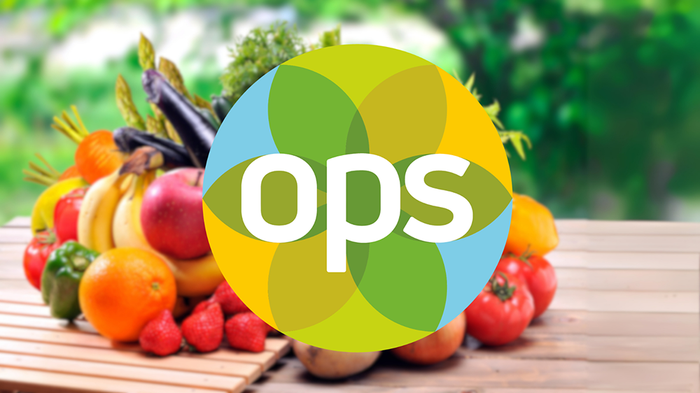A berry good summer for organic berries
June 12, 2024

While California’s organic strawberry crop is in peak production with promotable volume, the state’s organic blueberries are on the backside of their production with the Pacific Northwest crop lurking on the horizon and expected to bring excellent supplies in July and August.
“The California organic strawberry season has gone well so far,” said Tom Smith, director of sales at California Giant Berry Farms in Watsonville, CA. “Both the Santa Maria and Watsonville growing regions have produced strong volumes of high-quality fruit, which is slated to continue into the late-summer months. We are currently in the peak season for Santa Maria and Watsonville. 2024 volumes are stronger than 2023 and have followed a more traditional production curve, as 2023 was greatly impacted by excessive rainfall early in the year leading to a late start for California crops.”

Tom Smith, Director of Sales, California Giant Berry Farms
This peak of the season period is bringing great quality organic fruit, good availability and promotable FOB pricing. “We are currently planting our next crop and expect a strong crop in the fall,” said Smith. “Keep promoting organic strawberries all season long!”
“We are currently planting our next crop and expect a strong crop in the fall. Keep promoting organic strawberries all season long!” - Tom Smith
He added that the summer is an excellent time to promote the organic berry category. “Summer is peak season for most USA-grown berries like strawberries, blueberries, raspberries and blackberries. They’ll be most abundant in stores, driving consumer demand for berries in general,” Smith said. “Additionally, fresh berries are perfect for summer activities like picnics, barbecues, outdoor snacking and refreshing smoothies. Promoting organic berries taps into the desire for healthy and convenient summer treats.”

Smith also noted that organic blackberries are forecasted to peak from late-June to mid-August with promotional opportunities available spanning from June to August.
Blueberry volume expected to soar
The organic blueberry category is in a little bit of a gap but that should be rectified soon, according to Stephen Paul, deciduous category director for Homegrown Organic Farms in Porterville, CA. He reported to OPN Connect on Monday, June 10, that several high heat days in the San Joaquin Valley during the first week of June and several more in the immediate future are expected to cause an early end to California’s organic blueberry deal.

Stephen Paul, Deciduous Category Director, Homegrown Organic Farms
“I would say we are definitely on the backside of California’s production, but the Northwest is starting to scratch the surface. Beginning next week (week of June 17) we should have some Northwest production,” he said. “By the week of June 24, most growers should be picking, and that Northwest deal often has a rocket-level lift off. Once it starts, it spikes quickly.”
Paul said there could be promotable volume by the 4th of July for West Coast customers, who can get delivery within a day or two of production. “The 2024 crop (from Oregon and Washington) looks like one of the larger crops we have seen in a while. We should easily have good volumes until at least August 15, with the opportunity to moved well into September with good volume.”
He did note that it is impossible to predict late August weather patterns two months out so he can’t guarantee that volumes will hold, but barring unusual weather conditions, organic blueberries from the Pacific Northwest should last into September. Paul added that these may be needed as Peru is the next source of supply. While Peruvian growers start picking as early as late August, weather patterns have caused most crops to be later than usual this year and that may well mean organic blueberries from that South American country will not start on time.

Bigger containers, but few jumbo berries
With the good crop of organic blueberries expected to peak from the Northwest in July, Paul revealed that Homegrown Organic Farms will reintroduce its four-pound, retail-ready, organic blueberry box. “It’s a great value, especially for larger families that love blueberries,” he said. “We’ve used it before when there has been a large crop and this year qualifies.”
At the peak of the season, Paul said the 18-ounce tray tends to dominate sales, though organic blueberries are also sold in 6- and 11-ounce clamshells. “And a few retailers have moved toward a two-pounder,” he said. “This should be a good year for the two-pounder but it also should be good for the 4-pounder. We should have that right after the 4th of July for the greater part of July.”

While discussing the organic blueberry market, Paul also wanted to mention that the buying trade needs to readjust its perspective on jumbo blueberries. He said everyone wants jumbo size organic blueberries, but they are not the prevalent size. “Only about 10-15% of production are jumbos,” he said. “The mass majority of fruit is smaller. There needs to be a reality check about jumbos. Buyer expectations are not realistic. Jumbos are more limited than they realize. Everyone wants to order them and there just aren’t that many.”
Smith of California Giant Berry Farms also discussed the blueberry situation, concurring with Paul’s assessment. He noted that through the week of June 3-9, there were promotable supplies of organic blueberries from California’s Central Valley, but that may be short lived. “We are watching the weather as extreme heat threatens to disrupt production this late in the season. This could lead to a rapid decline in volume and limited supplies between now and the start of the Pacific Northwest season,” he said on June 10, reporting that the Watsonville grower-shipper was, “two-three weeks away from seeing a quick increase in production out of the Pacific Northwest region. Currently, peak volumes out of the Pacific Northwest are anticipated around mid-July through mid-August. We will have promotional opportunities for July and August with good volume, great quality and favorable pricing.”
Read more about:
Crop report
